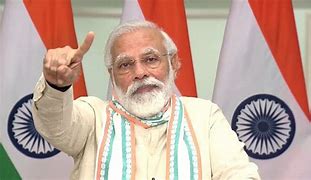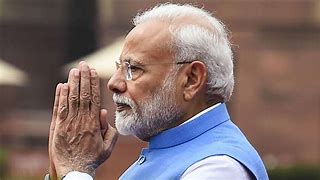Feature
India, Britain pledge to work together on climate change

London: Prime Minister Narendra Modi and his British counterpart David Cameron on Thursday here pledged to work together to tackle climate change and signed a memorandum to strengthen energy cooperation between the countries.
The leaders said climate change is “one of the greatest global challenges of the century having adverse impacts at the national and international levels”, said the joint statement.
Cameron and Modi welcomed the signing of a Memorandum of Understanding (MoU) to strengthen energy cooperation between the two countries building on existing successes and promoting closer future collaboration in areas such as electricity market reform, energy efficiency, offshore wind, solar power, smart grids, energy storage, and off-grid renewable energy services.
The two prime ministers also pledged to work together for a comprehensive agreement under the United Nations Framework Convention on Climate Change (UNFCCC) at the Paris Climate Conference in December 2015.
The leaders emphasised the importance of climate finance and of developed countries honouring their commitment to mobilize jointly $100 billion a year by 2020 from a wide variety of sources, both public and private, in the context of meaningful mitigation actions and transparency on implementation.
The two prime ministers announced 10 million pounds of joint funding from the Research Councils UK and Indian Department of Science and Technology for new joint renewable energy research centers, bringing the total value of the Indo-UK clean energy research programme to 60 million pounds.
Cameron announced the UK climate investment venture with the Green Investment Bank, which will invest up to a total of 200 million pounds of UK climate finance in renewable energy and energy efficiency projects in India and Africa. He also announced a 10 million pounds five-year programme of technical assistance to support national and state-level reforms in India’s power sector.
Cameron emphasized Britain’s commitment to reduce its greenhouse gas emissions by at least 80 percent by 2050, as set out in the 2008 Climate Change Act, meeting its carbon budgets in the most cost-effective manner.
Modi also highlighted India’s commitment to reduce its emissions intensity by 33-35 percent by 2030 compared to 2005 levels and put in place 40 percent cumulative electric power installed capacity from non-fossil fuel based energy resources by 2030 through nationally determined development measures and priorities.
Entertainment
Meghalaya Reserves Legalized Gambling and Sports Betting for Tourists

The State Scores Extra High on Gaming-Friendly Industry Index
Meghalaya scored 92.85 out of 100 possible points in a Gaming Industry Index and proved to be India’s most gaming-friendly state following its recent profound legislation changes over the field allowing land-based and online gaming, including games of chance, under a licensing regime.
The index by the UK India Business Council (UKIBC) uses a scale of 0 to 100 to measure the level of legalisation on gambling and betting achieved by a state based on the scores over a set of seven different games – lottery, horse racing, betting on sports, poker, rummy, casino and fantasy sports
Starting from February last year, Meghalaya became the third state in India’s northeast to legalise gambling and betting after Sikkim and Nagaland. After consultations with the UKIBC, the state proceeded with the adoption of the Meghalaya Regulation of Gaming Act, 2021 and the nullification of the Meghalaya Prevention of Gambling Act, 1970. Subsequently in December, the Meghalaya Regulation of Gaming Rules, 2021 were notified and came into force.
All for the Tourists
The move to legalise and license various forms of offline and online betting and gambling in Meghalaya is aimed at boosting tourism and creating jobs, and altogether raising taxation revenues for the northeastern state. At the same time, the opportunities to bet and gamble legally will be reserved only for tourists and visitors.
“We came out with a Gaming Act and subsequently framed the Regulation of Gaming Rules, 2021. The government will accordingly issue licenses to operate games of skill and chance, both online and offline,” said James P. K. Sangma, Meghalaya State Law and Taxation Minister speaking in the capital city of Shillong. “But the legalized gambling and gaming will only be for tourists and not residents of Meghalaya,” he continued.
To be allowed to play, tourists and people visiting the state for work or business purposes will have to prove their non-resident status by presenting appropriate documents, in a process similar to a bank KYC (Know Your Customer) procedure.
Meghalaya Reaches Out to a Vast Market
With 140 millions of people in India estimated to bet regularly on sports, and a total of 370 million desi bettors around prominent sporting events, as per data from one of the latest reports by Esse N Videri, Meghalaya is set to reach out and take a piece of a vast market.
Estimates on the financial value of India’s sports betting market, combined across all types of offline channels and online sports and cricket predictions and betting platforms, speak about amounts between $130 and $150 billion (roughly between ₹9.7 and ₹11.5 lakh crore).
Andhra Pradesh, Telangana and Delhi are shown to deliver the highest number of bettors and Meghalaya can count on substantial tourists flow from their betting circles. The sports betting communities of Karnataka, Maharashtra, Uttar Pradesh and Haryana are also not to be underestimated.
Among the sports, cricket is most popular, registering 68 percent of the total bet count analyzed by Esse N Videri. Football takes second position with 11 percent of the bets, followed by betting on FIFA at 7 percent and on eCricket at 5 percent. The last position in the Top 5 of popular sports for betting in India is taken by tennis with 3 percent of the bet count.
Local Citizens will Still have Their Teer Betting
Meghalaya residents will still be permitted to participate in teer betting over arrow-shooting results. Teer is a traditional method of gambling, somewhat similar to a lottery draw, and held under the rules of the Meghalaya Regulation of the Game of Arrow Shooting and the Sale of Teer Tickets Act, 2018.
Teer includes bettors wagering on the number of arrows that reach the target which is placed about 50 meters away from a team of 20 archers positioned in a semicircle.
The archers shoot volleys of arrows at the target for ten minutes, and players place their bets choosing a number between 0 and 99 trying to guess the last two digits of the number of arrows that successfully pierce the target.
If, for example, the number of hits is 256, anyone who has bet on 56 wins an amount eight times bigger than their wager.























